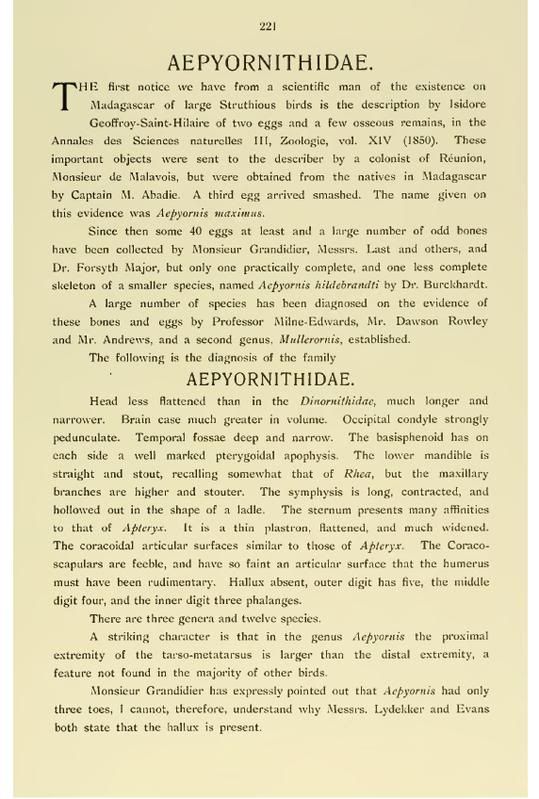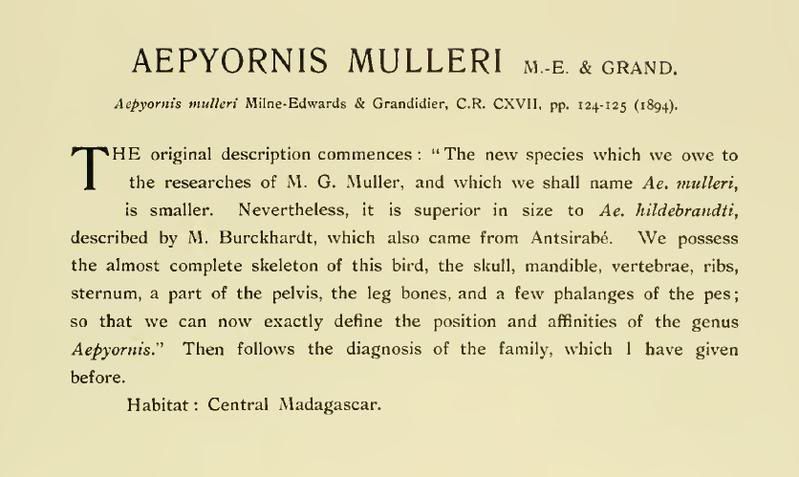|
|
Post by RSN on Jun 25, 2006 22:18:13 GMT
|
|
|
|
Post by another specialist on Jul 24, 2008 16:33:19 GMT
  Extinct birds : an attempt to unite in one volume a short account of those birds which have become extinct in historical times : that is, within the last six or seven hundred years : to which are added a few which still exist, but are on the verge of extinction (1907) |
|
|
|
Post by another specialist on Jul 24, 2008 16:55:02 GMT
 Extinct birds : an attempt to unite in one volume a short account of those birds which have become extinct in historical times : that is, within the last six or seven hundred years : to which are added a few which still exist, but are on the verge of extinction (1907) |
|
|
|
Post by another specialist on Jul 24, 2008 16:55:45 GMT
|
|
|
|
Post by another specialist on Jul 24, 2008 16:56:14 GMT
 Extinct birds : an attempt to unite in one volume a short account of those birds which have become extinct in historical times : that is, within the last six or seven hundred years : to which are added a few which still exist, but are on the verge of extinction (1907) |
|
|
|
Post by another specialist on May 1, 2009 12:27:51 GMT
|
|
|
|
Post by simontonge on Sept 6, 2010 17:12:09 GMT
This is a skeleton labelled Aepyornis hildebrandtii at Parc Tsimbazaza in Antananarivo. Whether it really is that species, or even whether A. hildebrandti actually existed, will remain a bit of a moot point until there is a modern taxonomic revision of the Aepyornithidae. Attachments:
|
|
|
|
Post by Melanie on Sept 7, 2010 8:22:21 GMT
Well Madagascar is much larger than New Zealand and so I think that there was more than one Aepyornis species on that island. If you compare the Aepyornis of Madagascar with the Moas of New Zealand you can see a good example of convergent evolution. On Madagascar there were few natural enemies for Aepyornis like the Malagasy Crowned Eagle (which probably feed on Aepyornis chicks), the crocodiles, and the Fossa. On New Zealand there were only one natural enemy for the moa, the Haast's Eagle.
|
|
|
|
Post by simontonge on Sept 9, 2010 12:23:15 GMT
I absolutely agree that it is highly likely that there were multiple species of elephantbird on Madagascar. My comment was only to highlight that the current list of putative species is very old and based on taxonomic concepts that are now outdated. The extensive work on Moas over the last 20 years has affirmed the validity of most, but not all, of the species that were described in the 19th century and has shown ontogenetic, temporal and sexual variation that had not been anticipated. I fully expect that similar patterns will be shown in the elephantbirds but as far as I know nobody is studying them. What a shame.
|
|
|
|
Post by Peter on Jul 4, 2015 22:18:23 GMT
Source: Worthy, T.H. (2009). Fossil Birds. In: Gillespie, R., Clague, D. (Eds.) (2009). Encyclopedia of Islands. Encyclopedias of the Natural World, No. 2. University of California Press. ISBN: 9780520256491.
|
|
|
|
Post by surroundx on Sept 27, 2018 11:37:35 GMT
|
|
|
|
Post by Sebbe on Oct 27, 2024 8:57:10 GMT
|
|
|
|
Post by Sebbe on Oct 27, 2024 8:58:43 GMT
|
|
|
|
Post by Sebbe on Oct 27, 2024 9:01:19 GMT
|
|